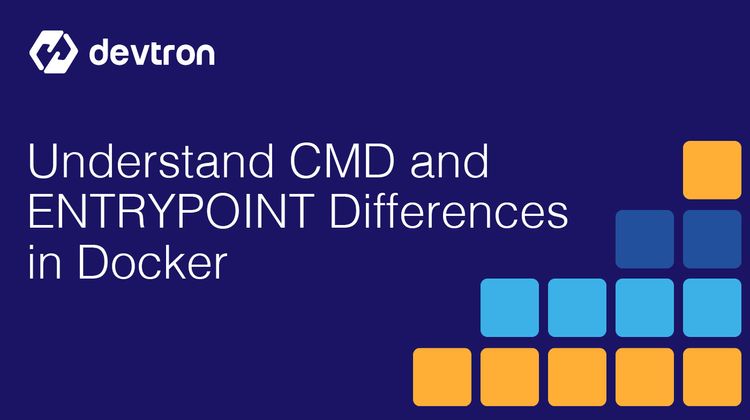The SDLC is a process to help accelerate the development, deployment, and operations of different applications. There are multiple phases of the software development lifecycle. In this blog, we will explore each phase of the SDLC lifecycle and gain a deep understanding of what these phases entail.
Please read this blog to learn more about the entire Software Development Lifecycle.
Phases of SDLC
The Software Development Life Cycle (SDLC) is divided into a few different phases which help ensure that the entire Development lifecycle proceeds smoothly, and minimizes the risk of errors or the need to reiterate on existing code and features.
Here is a brief overview of the major phases that comprise the SDLC:
- Planning: Define the scope of the project, it's purpose, requirements, and assign proper resources.
- Design: Create blueprints including architecture diagrams, user interface wireframes, and database structures.
- Development: The phase where the developers actually write the software code according to the laid out design.
- Testing: Verify that the software works as intended, detect and fix bugs, performance issues, or security vulnerabilities before the deployment.
- Deployment: Deploy the application a production environment where end users can access the software. The deployment can be done all at once, or in multiple stages.
- Maintenance: Support the software post-launch by fixing bugs, updating features, and ensuring long-term compatibility.
Let’s understand in depth what goes into all the phases mentioned above
Planning SDLC Phase
The Software Development Life Cycle (SDLC) planning stage is the first step where the foundation for the whole project is established. It is a stage where the purpose of the project is understood, its feasibility is determined, and how the final desired results are to be accomplished is planned out. This stage lays the groundwork for the rest of the SDLC by establishing the scope, needs, and aims of the project.
There are several major activities that take place within the Planning SDLC stage. We'll look at some of them next.
- Requirement Gathering: Understand what are the business objectives, technical requirements, and understand the relevant documents, expectations and project goals.
- Feasibility Checks: Check if the project is technically possible, and what are the operational and financial feasibility and determine if it is achievable in the given time, budget, and resource constraints.
- Define Objectives: Define the project’s goals and success criteria and establish measurable KPIs.
- Risk Analysis: Identify potential risks and develop strategies to mitigate risks
- Project Planning: Create a project roadmap including milestones, timelines, deliverables, and define the roles and responsibilities of team members.
From the SDLC's planning phase, the main outcome is a project plan that highlights the project's scope, stakeholders, viability and technical requirements. This helps to create a proper timeline, manage the risks, define milestones and ensure that the development process can proceed smoothly.
The planning phase of the SDLC is crucial as it creates the foundation for a project's success. It minimizes risks, prevents going beyond the project's scope, and enables efficient resource allocation through analysis and planning.
Design SDLC Phase
The design phase of the Software Development Life Cycle (SDLC) involves creating a blueprint and architecture diagrams which will be used in the development phase. It defines how the system will be built and function. It acts as a bridge between requirements and implementation.
There are a few key activities involved in the Design SDLC phase. Let’s take a look at these different activities:
- Design Specification: Develop detailed design with the system’s architecture, data flow, interfaces, and key modules.
- Modeling: Create data flow diagrams, entity-relationship models, or other models to define how data is structured and flows through the system.
- UI Design: Develop wireframes or prototypes for the system's user interfaces to ensure a seamless user experience.
- Tech Selection: Choose the frameworks, programming languages, tools, and platforms required to develop the system.
- Integration Planning: Define how different modules and external systems will interact to ensure seamless integration.
- Security Design: Define the security protocols, authentication mechanisms, and compliance measures to protect the system and its data.
The key deliverables of the SDLC design phase include a High-Level Design that describes the overall architecture and system design, a Low-Level Design that details specific components, modules, and Prototypes or Wireframes that provide a visual representation of the system’s interface. These deliverables ensure the development team has a clear roadmap for building the system efficiently.
Development SDLC Phase
The development phase of the Software Development Life Cycle (SDLC) is where the actual coding and implementation of the system take place. This phase transforms the designs and plans into a working product or system. It involves writing, testing, and integrating code to build the system according to the design specifications.
There are a few key activities involved in the Development SDLC phase. Let’s take a look at these different activities:
- Code Implementation: Developers write code based on the High-Level Design and Low-Level Design documents using the selected programming languages, frameworks, and tools.
- Module Development: The system is divided into smaller, manageable modules that are developed independently and simultaneously by different teams.
- Version Control: Utilize version control systems like git to manage code repositories, track changes, and collaborate effectively.
- Unit Testing: Perform initial testing of individual modules or components to ensure they function as intended.
- Integration: Combine and integrate all the developed modules to form a cohesive system.
- Documentation: Maintain technical documentation that describes the codebase, algorithms, and functionality of each module.
The key deliverables of the SDLC development phase include Source Code, which implements the system’s functionality, Unit Test Reports, documenting the results of testing individual components, and updated documentation that details the implementation process and technical specifications.
Testing SDLC Phase
The testing phase of the Software Development Life Cycle (SDLC) ensures that the developed system meets the defined requirements and functions as expected. This phase focuses on identifying and resolving defects, validating performance, and ensuring the product is reliable, secure, and ready for deployment.
There are a few key activities involved in the Testing SDLC phase. Let’s take a look at these different activities:
- Test Planning: Create a test plan that outlines the testing strategy to ensure that all the developed features are tested thoroughly.
- Test Case: Write detailed test cases that define inputs, execution steps, and expected results for various functionalities.
- Unit Testing: Verify individual components or modules for correctness, often conducted during development.
- Integration Testing: Test the interactions between integrated modules to ensure they work together seamlessly.
- System Testing: Validate the system as a whole to check if it meets the requirements and performs as expected in a real-world environment.
- User Acceptance Testing (UAT): Conduct tests with end-users or stakeholders to ensure the system meets their needs and is ready for production.
- Bug Reporting and Fixing: Identify defects, log them in a tracking system, and ensure they are resolved and retested.
The key deliverables of the SDLC testing phase include Test Plans and Test Cases, which define the testing strategy and scenarios; Bug Reports, documenting issues found during testing; and Test Summary Reports, providing an overview of testing outcomes, defect status, and readiness for deployment. These deliverables ensure a thorough evaluation of the system's quality and functionality.
Maintenance SDLC Phase
The maintenance phase of the Software Development Life Cycle (SDLC) begins after the system is deployed and operational. This phase focuses on ensuring the system continues to function as intended, meets evolving user needs, and remains secure and efficient over time. It involves monitoring, updating, and enhancing the system based on feedback, performance data, and changing requirements.
There are a few key activities involved in the Maintenance SDLC phase. Let’s take a look at these different activities:
- System Monitoring: Continuously monitor system performance, usage, and error logs to identify potential issues or bottlenecks. Different observability tools can be used for this.
- Bug Fixing: Address any bugs or defects reported by users or detected during monitoring to maintain system reliability.
- Updates and Enhancements: Implement updates to add new features, improve performance, or adapt to changes in technology and business needs.
- Security Patches: Regularly update the system to address security vulnerabilities and ensure compliance with security standards.
- Performance Optimization: Make adjustments to improve system speed, scalability, and resource efficiency as usage patterns evolve.
- User Support: Provide ongoing technical support to resolve user issues and ensure satisfaction.
The key deliverables of the SDLC maintenance phase include Bug Fix Reports, documenting issues resolved; System Updates and Patches, ensuring the system is up-to-date; and Performance Reports, analyzing system performance and highlighting areas for improvement. These deliverables help maintain the system's reliability and relevance.
Conclusion
The SDLC provides a systematic approach to building and managing software, with each phase playing a crucial role in ensuring project success. From the initial Planning Phase, where requirements are defined, to the Design Phase, which creates the blueprint, followed by the Development Phase, where the system is built, the Testing Phase, which ensures quality, and finally the Maintenance Phase, which keeps the system running smoothly, each step is essential.
Understanding these phases helps teams collaborate effectively, reduce risks, and deliver software that meets user needs and business goals. By adhering to this structured process, organizations can streamline their workflows and consistently achieve reliable, high-quality results.
FAQ
What is SDLC in detail?
SDLC (Software Development Life Cycle) is a detailed process that guides the development of software through specific phases: Planning, Requirement Analysis, Design, Implementation, Testing, Deployment, and Maintenance. It ensures systematic development, quality assurance, and alignment with user needs.
What are the 7 stages of SDLC?
The 7 stages of SDLC are:
- Planning: Define project goals and feasibility.
- Requirement Analysis: Gather and document user needs.
- Design: Create system architecture and detailed designs.
- Implementation: Write and compile the code.
- Testing: Identify and fix defects.
- Deployment: Release the software for use.
- Maintenance: Update and improve the software post-launch.
What is the importance of the Planning stage?
The Planning stage is crucial for defining project goals, scope, resources, and feasibility. It sets a clear roadmap, minimizes risks, and ensures alignment with business objectives.
What happens in the Maintenance phase?
In the Maintenance phase, software is updated to fix bugs, improve performance, and add new features. It ensures the software remains functional, secure, and aligned with user needs.








